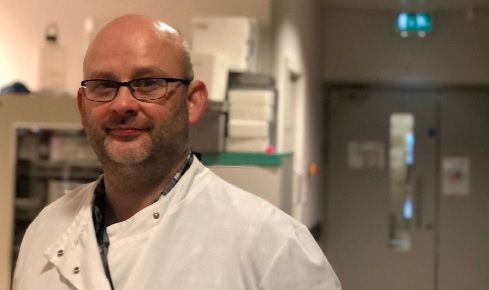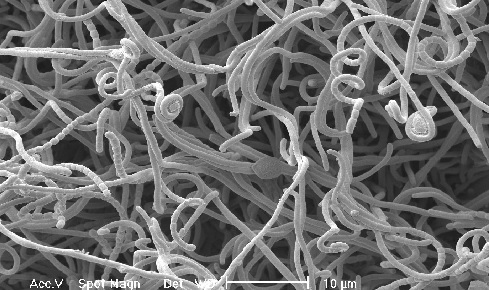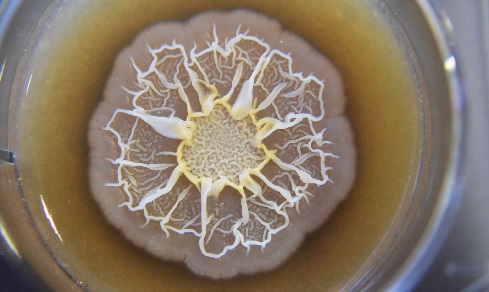My Lab Unlocked: The Hoskisson Lab

Professor Paul Hoskisson FRSB and his team study how bacteria evolve to produce useful compounds, such as antimicrobials, in response to their environment.
March 2021
The majority of my research is focused on how and why the bacteria Streptomyces produce useful molecules such as antibiotics. My passion has always been Streptomyces bacteria, since I first came across them as an undergraduate. Being able to lead my own research group studying Streptomyces is all I really wanted to do – once I found them I was hooked.
Streptomyces are responsible for making the lovely ‘soil smell’ after rain by producing a molecule called geosmin. They are beautiful bacteria that are really useful because of their ability to make useful natural products, that we can exploit as drugs, that they use in the natural environment to help them compete with organisms such as other bacteria and fungi. We are interested in how they adapt to their natural environment and how they have evolved their metabolism to make natural products. This also helps us to understand how we may encourage them to produce certain molecules in the laboratory and can also help improve production of antibiotics in industry.
Antimicrobial resistance (AMR) is a major global health problem and our work is aligned with finding new antimicrobial drugs and improving the production of the ones we already have. It has been predicted that antimicrobial resistant infections may kill in excess of 10 million people each year by 2050. We need to address the lack of new antimicrobial drugs coming to market and also issues around AMR more widely, such as antibiotic stewardship, diagnostics and understanding the basic biology of antimicrobial resistant pathogens. The SARS-Cov-2 pandemic is likely to increase our problems due to AMR because of the large-scale use of antibiotics in COVID patients to prevent secondary bacterial infections.

We also work in several other areas including studying the pathogen Corynebacterium diphtheriae, a distant cousin of Streptomyces, which causes Diphtheria. We also collaborate widely on a whole range of projects such as new imaging methods for microorganisms, developing rapid electronic detectors for pathogens, studying microbiomes and how we can use enzymes from bacteria to perform chemical reactions for industry.
We are a very multidisciplinary lab. We have biologists, chemists and optical physicists in the laboratory and we use a wide range of techniques and scales from studying atomic resolution of proteins through to population genomics of bacteria and everything in between. We always find it easier to teach chemists and physicists how to do biology than the other way around! One of the great things about science is the social aspect of collaboration – interacting with a wide range of people for different backgrounds and expertise is fascinating. It mostly it is about learning each other’s jargon.
We collaborate widely with chemists, physicists, bioinformaticians, immunologists, biochemists, structural biologists and zoologists. I’m basically interested in everything, so often we collaborate on wacky projects, such as a recent collaboration between materials scientists, zoologists and us to study proteins from the foam nests of a species of frog from Trinidad.

I guess like most labs, our proudest achievements are the training of the next generation of scientists – seeing our PhD students graduate and post-docs go on to do great things. One of my first PhD students is now running her own lab, and her first PhD student started last year – that was a very proud moment.
If you want to find out more about the Streptomyces bacteria that our research is focused on, then we have made this outreach video on why Streptomyces are so important to us. And if you’d like to search for your own antibiotics, play this new simulation game, Dr Dirt, also available on the Apple App Store.
COVID has affected us, like everyone. We have been lucky and the laboratory has not suffered any serious illness. Social distancing and restrictions to working has meant that we had a period where we couldn’t do lab work, but we were able to write papers and thesis chapters, analyse data and carry-out bioinformatics work. We are slowly getting back up to full pace again, but it is different.
http://paulhoskisson.weebly.com/
Professor Paul Hoskisson FRSB is Royal Academy of Engineering Research Chair in Engineering Biology @paulhoskisson


